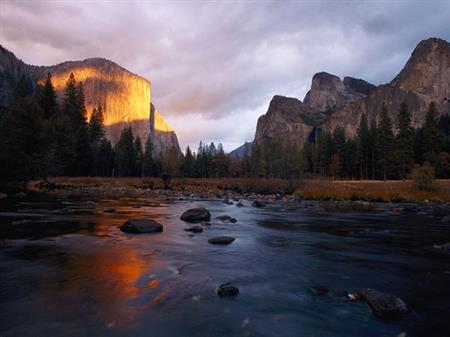National Parks Celebrate 100th Birthday!
The National Park Service turns 100 on Thursday marking a century since Woodrow Wilson signed into law the act creating the agency. Celebrations begin with free entry Thursday through Sunday at the 124 parks that charge fees.
In addition, parks, historic sites, seashores and other public lands are planning celebrations too on what’s also called Founders Day.
In Washington, D.C., more than a thousand people are expected to show up at the Washington Monument on Thursday morning to form a Centennial Living Arrowhead, the symbol of national parks, using brown, green and white umbrellas.
The national parks have been woven into the fabric of American life for so many generations that it’s hard to imagine the nation without them.
But the decision to set these special places aside was not an obvious, or easy, one. No road map existed for the journey that created the national parks because no places quite like them existed anywhere in the world.
The parks were born because in the mid-1800s a relatively small group of people had a vision—what writer Wallace Stegner has called “the best idea we ever had”—to make sure that America’s greatest natural treasures would belong to everyone and remain preserved forever.
“Americans developed a national pride of the natural wonders in this nation and they believed that they rivaled the great castles and cathedrals of Europe,” explains David Barna, National Park Service Chief of Public Affairs.
Early Efforts
Yosemite was at the heart of America’s nascent national parks movement. The California valley’s splendor inspired some of its earliest European visitors to demand protection, even as settlers moved ceaselessly westward, “civilizing” the West and displacing native peoples.
Elegant voices, like that of naturalist John Muir, brought the grandeur of such lands to those who had never seen them. His prolific and widely published writings stressed how such wild places were necessary for the soul, and his advocacy later became the driving force behind the creation of several national parks.
Responding to such calls, Congress and President Abraham Lincoln put Yosemite under the protection of California during the Civil War. In 1872 Lincoln’s former general, President Ulysses S. Grant, made Yellowstone America’s—and the world’s—first truly national park. More parks soon followed suit and, beginning in the late 19th century, cultural sites like Arizona’s prehistoric Casa Grande were honored as well.
President Theodore Roosevelt was one of the park system’s greatest patrons. During his administration (1901-09) five new parks were created, as well as 18 national monuments, four national game refuges, 51 bird sanctuaries, and over 100 million acres (40 million hectares) of national forest.
http://travel.nationalgeographic.com/travel/national-parks/early-history/
